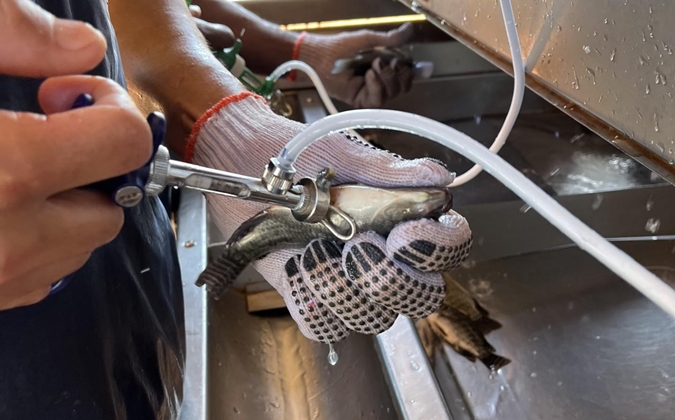
Tilapia strain resistant to damaging virus could help reduce losses
The discovery of a strain of Nile tilapia resistant to tilapia lake virus (TiLV) may prove useful in the fight to reduce the impact of the pathogen, which has emerged in the last decade and can cause extremely high mortalities among farmed fish.
Using a cohabitation model, where fish injected with the virus share tanks with uninfected individuals, three different strains from the Nile region where the species originated were tested.
While two strains, from Lake Mansana and an unknown location, had low survival rates when faced with the indirect viral challenge (6.7% and 29.3%), a strain from Lake Turkana, known as ELM, showed nearly 100% survival.
Lower viral loads were seen in the mucosal layer and internal tissues of the ELM strain fish, while analysis of RNA samples showed high expression of the antiviral gene Mx1. This could have driven a strong antiviral response during the early phase of infection, limiting infection and disease-related pathology, the researchers said, though they also noted that strain-specific mutations which impair the virus’s ability to attach to target cells could be a factor.
A research first though work remains
The work by the international team of scientists is the first time the differences in resistance to TiLV of different tilapia strains has been successfully determined, though they stressed that further tests need to be conducted before use of ELM fish becomes an option in the field.
“The resistance of ELM should be tested with additional, local isolates of TiLV before wide implementation, as some virulence factors of the virus could influence the resistance status of the fish,” the authors said.
“Nonetheless, we believe that the use of the resistant ELM tilapia strain can provide an ad hoc, stopgap solution to the TiLV challenge affecting global tilapia aquaculture.”
Despite the promising disease resistance observed, ELM tilapia is unlikely to provide a stand-alone method of managing TiLV outbreaks, they suggested, as the fish still had viral loads in their liver and brain, meaning that they could be persistent carriers of the virus. As such, they could be used alongside measures such as biosecurity, diagnostics and vaccination.
You can read the full journal article in Fish & Shellfish Immunology.
Posted on: May 04, 2022






